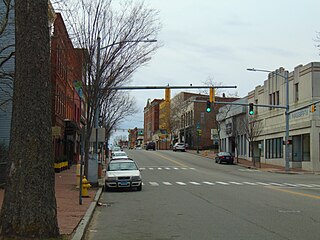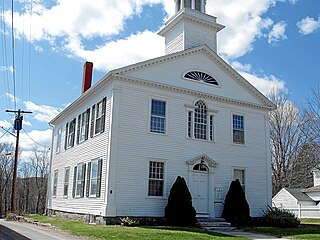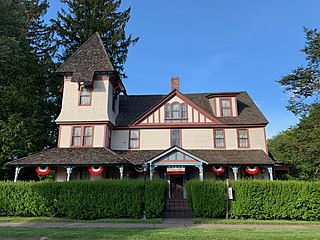
Hampden County is a non-governmental county located in the Pioneer Valley of the state of Massachusetts, in the United States. As of the 2020 census, Hampden County's population was 465,825. Its traditional county seat is Springfield, the Connecticut River Valley's largest city, and economic and cultural capital; with an estimated population of 154,758, approximately 1 in 3 residents of Hampden County live in Springfield. Hampden County was split from Hampshire County in 1812, because Northampton, Massachusetts, was made Hampshire County's "shire town" in 1794; however, Springfield—theretofore Hampshire County's traditional shire town, dating back to its founding in 1636—grew at a pace far quicker than Northampton and was granted shire town-status over its own, southerly jurisdiction. It was named for parliamentarian John Hampden. To the north of Hampden County is modern-day Hampshire County; to the west is Berkshire County; to the east is Worcester County; to the south are Litchfield County, Hartford County, and Tolland County in Connecticut. Hampden County is part of the Springfield, MA Metropolitan Statistical Area. It is the most urban county in Western Massachusetts. The Knowledge Corridor surrounding Springfield-Hartford is New England's second most populous urban area with 1.9 million people.

Bridgewater is a town in Litchfield County, Connecticut, United States. The population was 1,662 at the 2020 census, down from 1,727 at the 2010 census.

Ellington is a town in Tolland County, Connecticut, United States. Ellington was incorporated in May 1786, from East Windsor. As of the 2020 census, the town population was 16,426.

Tolland is a suburban town in Tolland County, Connecticut, United States. The population was 14,563 at the 2020 census.

Willimantic is a census-designated place located in the town of Windham in Windham County, Connecticut, United States. It is a former city and borough, and is currently organized as one of two tax districts within the Town of Windham. Known as "Thread City" for the American Thread Company's mills along the Willimantic River, it was a center of the textile industry in the 19th century. Originally incorporated as a city in 1893, it entered a period of decline after the Second World War, culminating in the mill's closure and the city's reabsorption into the town of Windham in the 1980s. Heroin use, present since the 1960s, became a major public health problem in the early 2000s, declining somewhat by the 2010s. Though the city was a major rail hub, an Interstate Highway has never passed within ten miles, despite early plans to connect it.

Woodstock Academy (WA), founded in 1801, is a high school located in Woodstock, Connecticut, United States. The Academy, which describes itself as an independent school, serves residents from the Connecticut towns of Brooklyn, Canterbury, Eastford, Pomfret, Union, and Woodstock. The respective towns' taxpayers pay student tuition through municipal taxes, and therefore state agencies and the National Center for Education Statistics (NCES) categorize Woodstock as a public school. The school also accepts tuition-paying students from surrounding towns and states as day students, and students from around the country and the world as residential students. The original Academy building located on the North Campus is well known for the pool located on the third floor.

The Connecticut State Library is the state library for the U.S. state of Connecticut and is also an executive branch agency of the state. It is located in Hartford, Connecticut directly across the street from the Connecticut State Capitol. The State Library provides a variety of library, information, archival, public records, museum, and administrative services to the citizens of Connecticut, as well as the employees and officials of all three branches of state government. Students, researchers, public libraries and town governments throughout the state are also served by the State Library. In addition, the State Library directs a program of statewide library development and administers the Library Services Technology Act state grant. "The mission of the Connecticut State Library is to preserve and make accessible Connecticut's history and heritage and to advance the development of library services statewide."

The Provo City Library is a public library serving residents of Provo and Orem in the U.S. state of Utah. It occupies the building of the former Brigham Young Academy, which was built in 1892. In 1976, the building was added to the National Register of Historic Places. After a remodeling process, it was rededicated as the Provo City Library on September 8, 2001.

The Tolland Green Historic District is a historic district that includes the town green, Tolland Green, of Tolland, Connecticut.

The Old Tolland County Courthouse is a historic former courthouse at 53 Tolland Green in Tolland, Connecticut. Built in 1822 it was used as a county courthouse until the 1890s. It housed the Tolland Public Library from 1899 to 1985. Now a history museum operated by the Tolland Historical Society, the building was listed on the National Register of Historic Places in 1977.

Albert Randolph Ross was an American architect. Born in Westfield, Massachusetts, he was a son of architect John W. Ross.
The Board of Regents for Higher Education (BOR) is a government body in the U.S. state of Connecticut that oversees the Connecticut State Colleges & Universities (CSCU). CSCU and the BOR were created on July 1, 2011, consolidating the governance of the state's twelve community colleges, four state universities, and Charter Oak State College. The BOR assumed the powers and responsibilities of the respective former Boards of Trustees and the Board for State Academic Awards; it also retains many responsibilities for setting statewide policy of the former Board of Governors for Higher Education.
Dorothy Cheney Goodwin was an American educator and politician. She taught at the University of Connecticut (1957–1974) and served in the Connecticut House of Representatives (1975–1984) as well as on the Connecticut State Board of Education (1984–1990). She was inducted into the Connecticut Women's Hall of Fame in 1994.

The Ballard Institute and Museum of Puppetry (BIMP) is a public museum of puppetry operated by the University of Connecticut and located in Storrs, Connecticut.

The Daniel Benton Homestead is a historic house museum and the oldest house in Tolland, Connecticut. It was built in 1720 and has been operated by the Tolland Historical Society as a museum since 1970.

The Hicks-Stearns Family Museum is a Victorian historic house museum located on the town green in Tolland, Connecticut. The house was built in 1788, when it served as a tavern. It was occupied by the Hicks family from 1845 until 1970. Along with the Old Tolland County Jail and Museum, the Tolland County Courthouse, and the Daniel Benton Homestead, the Hicks-Stearns Family Museum is one of Tolland's four major landmarks.

Ratcliffe Hicks (1843–1906) was an American lawyer, industrialist, state legislator, and philanthropist from Tolland, Connecticut. The family home is now the Hicks-Stearns Family Museum. The Ratcliffe Hicks School of Agriculture at the University of Connecticut and the Hicks Memorial Municipal Center and Library in Tolland are named after him.

Albert Nels Jorgensen was an American academic administrator who served as the seventh president of the University of Connecticut (1935–1962). Its longest-serving president and its youngest at age 36 at the time of his appointment, Jorgensen led UConn's transformation from a sleepy, unaccredited agricultural college to a major modern university. UConn came into existence via the renaming of Connecticut State College in 1939. Student enrollment rose from 844 in 1935 to 11,877 in 1962—an increase of over 1400%. Opened in 1955, the Jorgensen Center for the Performing Arts on the university's Storrs campus was named in Jorgensen's honor. The Harriet Jorgensen Theatre is named after his wife.

University of Connecticut College of Agriculture, Health, and Natural Resources (CAHNR) is the oldest of UConn's fourteen colleges and teaches a wide range of subjects. The college was originally established for the purpose of conducting research and teaching practical skills to modernize farming. The college faculty conduct research, teach and work with Connecticut communities on subjects like food systems, plant and animal agriculture, human health, nutrition, and physical activity, and environmental sciences. The college describes its mission as working "toward a global sustainable future."


















